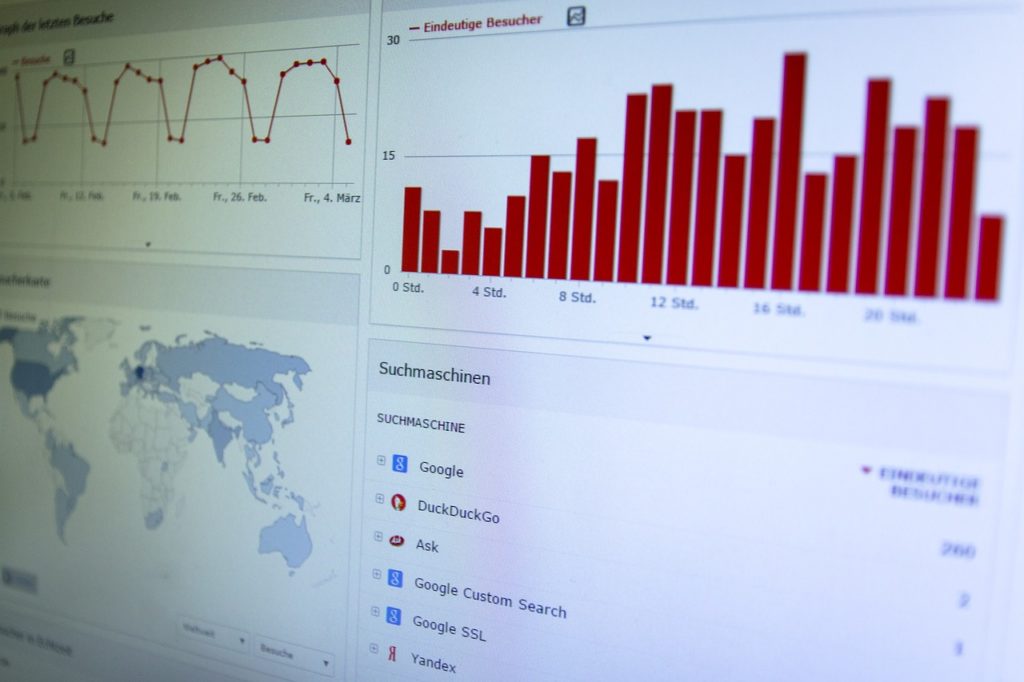Show:
How to Create & Use Data-Driven Content for Link Building
The verdict is in, link-building is no longer an obscure and controversial method for improving your search rankings. In fact, backlinks are considered to be the 2nd most important ranking signal used by Google Search. The top SERP results also consistently outperform the rest in terms of the number, and quality, of the backlinks they own.
Despite the huge benefits of link-building, not everyone has made the most of it. As much as 95% of all content doesn’t generate any backlinks – a shocking statistic.

Data-driven content, however, is one of the best ways to improve your link profile. It provides the opportunity to create valuable, engaging, and highly linkable content.
In this article, we’ll provide you with some useful tips on how to leverage this type of content for your next link-building campaign.
Choose a Data-Driven Content Format
Creating a strategy to maximize the results of your data-driven content starts with selecting the type of content you want to create. This decision should be informed by analyzing industry trends, what your competitors are doing, and establishing how you can deliver the most value to your visitors.
When it comes to data-driven content, three formats stand out when it comes to creating valuable, effective, and linkable content:
Data Analysis
Data analysis may sound like tedious work, but it’s one of the best and easiest ways to create highly linkable data-driven content.
One reason is that data analysis provides so many opportunities for creating value out of seemingly insignificant figures and facts. For example, you can create all kinds of graphs, lists, and figures. Bar graphs, pie charts, or line charts may be simple to generate, but they provide readers with a quick and easy way to consume your data.
If possible, analyzing your own original data is preferable, but you can also source data from publicly available sources or professional/premium research studies. Depending on your expertise, time, or resources, you can even crawl website pages or collate data from various sources.
The more valuable and unique the data, the better. So, see it as an investment that will pay back dividends later when your content goes live.

Surveys
Surveys might be your best friend when it comes to an easy and cost-effective way to come up with original data with insightful results.
Today, there are many effective and budget-friendly ways to generate a huge number of responses. For example, you can use platforms like Google Surveys or SurveyMonkey to reach a wider audience than you might otherwise be able to.
The key ingredient to creating successful linkable data-driven content based on survey results is to find an interesting angle that will intrigue readers, publishers, and answer burning questions.
Luckily, humans have a natural tendency to want to keep their fingers on the pulse of public opinion. So, if you can identify a relevant and newsworthy topic, you’ll be able to pull the right strings to generate more links for your content.
Research Compilations
Research compilations are probably the most popular choice for content creators today when crafting data-driven content. In fact, if you Google facts or statistics of a topic, you’ll mostly come across research compilations with headings like “101 Brain-busting Facts About SEO”, etc.
Resource compilations contain facts, figures, and statistics sourced from multiple sources, studies, etc. They typically present the facts in a listicle format and may provide some interpretation, but don’t go as in-depth as data analysis.
The reasons this type of data-driven content is popular are:
- The data is easy to source from studies, research papers, or other research compilations hosted on the internet
- It’s easy to organize and present the data
- It provides you with the opportunity to draw your own conclusions from multiple sources
However, it can be easy to get lazy when it comes to research compilations. If you do your research, you’ll see that many resource compilations on the same topic fall in a recursive pattern of referencing each other for data.
The closer you can get to reference the original source of the data, the more authoritative and trustworthy your research compilation will seem. Once again, the quality of your data is the key aspect here. You’ll need to decide what quality-to-quantity ratio you are satisfied with pursuing.
Promote Your Content Through Outreach Campaigns
The work doesn’t stop once you’ve created your content. In fact, for most of us, that’s when the real work begins.
Only established brands who’ve already built high domain authority and have heavy traffic can afford to let the traffic come to them. Assuming that you’ve invested the time, money, and effort in drafting the best content-driven piece possible, you’ll want to do it justice by spreading it far and wide.
This can involve cold calls, email outreach, or submissions directly to popular publications. These outreach methods aren’t everyone’s cup of tea, so if you find that you need some outside help, a link-building agency like Uprankly.com might help tremendously.

A key weapon in your promotion arsenal will be manual outreach campaigns to bloggers, publishers, and other voices in related industries. Of course, you might not want to pitch your content to direct competitors, but the more relevant their content is to yours – the better.
Once again, you’ll need to decide whether you go for quality or quantity. Many digital marketers today believe in the 80/20 principle which means putting 80% of your effort into 20% of your leads. Personalization, for example, plays a huge role in the effectiveness of email campaigns.
The higher the authority of the domains that link to your content, the more SEO juice they will pass to your rankings score. Of course, these links will be more sought after and difficult to secure but may pay off way more in the long run.
Repurpose Your Content
If you’ve invested heavily in creating superb data-driven content, you have to maximize its value.
One way to do that is to repurpose it for use in different ways which can also lead to more widespread sharing and linking. For example, you can create handy infographics from your data-rich articles which are great for generating social shares. According to Backlinko, infographics are up to 25.8% more shareable while also being highly linkable.
Content like infographics and videos are rarer to find and will help distinguish your content from the masses. This will help build links in larger volumes from more reputable sources.
Promote Your Content on Multiple Channels
While you’re busy promoting your content, why not utilize it across all your channels to create more buzz for your brand and, hopefully, build more links?
This can be as easy as creating social content formats from the data-driven article and posting it to your various social media accounts. As these formats are shorter, you can get creative by breaking it up into a series of facts, all linking back to the master page.
While social links may not contribute rank by themselves, they will hopefully lead to a snowball effect of your content being shared, especially within your industry circles. If your original content is worthy, it may entice links from these social leads.
If you want to go the extra mile, you can even set up a webinar or podcast to discuss the findings with your peers or other industry experts.
Conclusion
While creating data-driven content for link-building might seem like a daunting task, it doesn’t have to be. By taking your time, approaching it methodically, and thinking out of the box when it comes to how to use and promote your content, you can maximize link-building opportunities. Best of all, you’ll deliver high-value content to your visitors that boosts your brand’s authority as well as improving your SERP rankings.

 Return to Previous Page
Return to Previous Page








